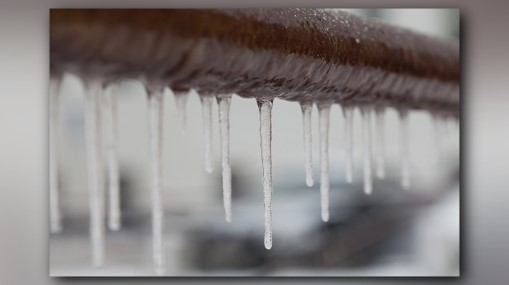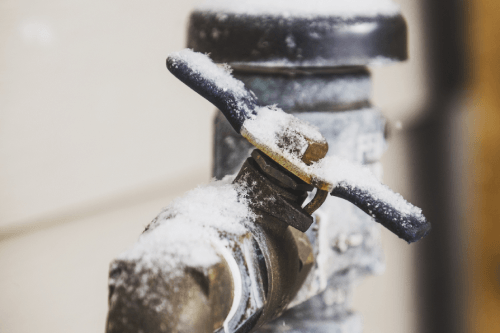Avoiding Frozen Plumbing in Cold Weather: Essential Tips
Avoiding Frozen Plumbing in Cold Weather: Essential Tips
Blog Article
We've found this post pertaining to 6 Ways to Prevent Frozen Pipes listed below on the internet and figured it made perfect sense to quickly share it with you over here.

Winter can wreak havoc on your plumbing, particularly by freezing pipes. Here's exactly how to stop it from happening and what to do if it does.
Intro
As temperature levels decline, the risk of icy pipes boosts, potentially bring about expensive repair services and water damages. Comprehending exactly how to stop icy pipes is critical for property owners in cool environments.
Understanding Icy Pipelines
What causes pipes to freeze?
Pipelines freeze when exposed to temperature levels below 32 ° F (0 ° C) for prolonged durations. As water inside the pipes freezes, it broadens, taxing the pipe walls and potentially creating them to burst.
Dangers and problems
Frozen pipelines can lead to supply of water interruptions, residential property damages, and pricey repairs. Burst pipes can flooding homes and cause comprehensive structural damages.
Indications of Frozen Water Lines
Recognizing frozen pipelines early can avoid them from rupturing.
How to identify icy pipes
Look for reduced water circulation from faucets, unusual odors or noises from pipes, and visible frost on exposed pipes.
Avoidance Tips
Insulating vulnerable pipelines
Wrap pipes in insulation sleeves or make use of warm tape to safeguard them from freezing temperature levels. Concentrate on pipes in unheated or external areas of the home.
Heating techniques
Maintain indoor areas adequately warmed, especially locations with pipes. Open cabinet doors to allow cozy air to flow around pipelines under sinks.
Safeguarding Outside Pipes
Yard hose pipes and outside faucets
Disconnect and drain garden pipes prior to winter months. Install frost-proof spigots or cover exterior faucets with shielded caps.
What to Do If Your Pipes Freeze
Immediate activities to take
If you suspect icy pipelines, maintain faucets available to eliminate stress as the ice thaws. Utilize a hairdryer or towels soaked in hot water to thaw pipes slowly.
Long-Term Solutions
Structural adjustments
Take into consideration rerouting pipes away from exterior wall surfaces or unheated locations. Add added insulation to attics, cellars, and crawl spaces.
Updating insulation
Invest in top notch insulation for pipes, attic rooms, and walls. Correct insulation helps preserve consistent temperature levels and decreases the risk of frozen pipes.
Verdict
Protecting against icy pipes needs positive actions and quick reactions. By recognizing the causes, indications, and preventive measures, homeowners can secure their pipes throughout cold weather.
5 Ways to Prevent Frozen Pipes
Drain Outdoor Faucets and Disconnect Hoses
First, close the shut-off valve that controls the flow of water in the pipe to your outdoor faucet. Then, head outside to disconnect and drain your hose and open the outdoor faucet to allow the water to completely drain out of the line. Turn off the faucet when done. Finally, head back to the shut-off valve and drain the remaining water inside the pipe into a bucket or container. Additionally, if you have a home irrigation system, you should consider hiring an expert to clear the system of water each year.
Insulate Pipes
One of the best and most cost-effective methods for preventing frozen water pipes is to wrap your pipes with insulation. This is especially important for areas in your home that aren’t exposed to heat, such as an attic. We suggest using foam sleeves, which can typically be found at your local hardware store.
Keep Heat Running at 65
Your pipes are located inside your walls, and the temperature there is much colder than the rest of the house. To prevent your pipes from freezing, The Insurance Information Institute suggests that you keep your home heated to at least 65 degrees, even when traveling. You may want to invest in smart devices that can keep an eye on the temperature in your home while you’re away.
Leave Water Dripping
Moving water — even a small trickle — can prevent ice from forming inside your pipes. When freezing temps are imminent, start a drip of water from all faucets that serve exposed pipes. Leaving a few faucets running will also help relieve pressure inside the pipes and help prevent a rupture if the water inside freezes.
Open Cupboard Doors
Warm your kitchen and bathroom pipes by opening cupboards and vanities. You should also leave your interior doors ajar to help warm air circulate evenly throughout your home.

We hope you enjoyed reading our post about How to Prevent Your Pipes From Freezing. Thanks so much for finding the time to read through our posting. Do you know another individual who is intrigued by the topic? Take a moment to share it. We treasure your readership.
Visit Url Report this page